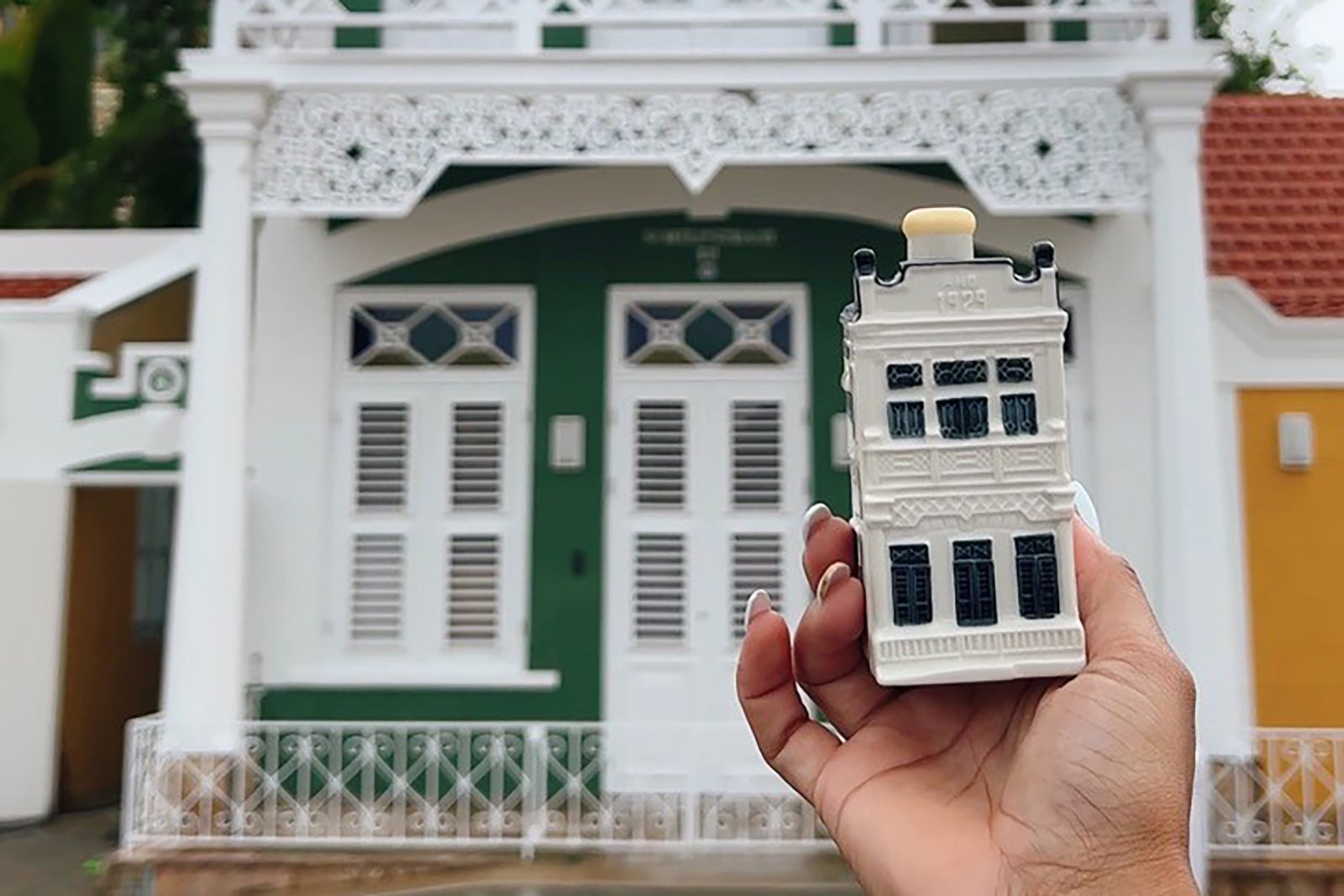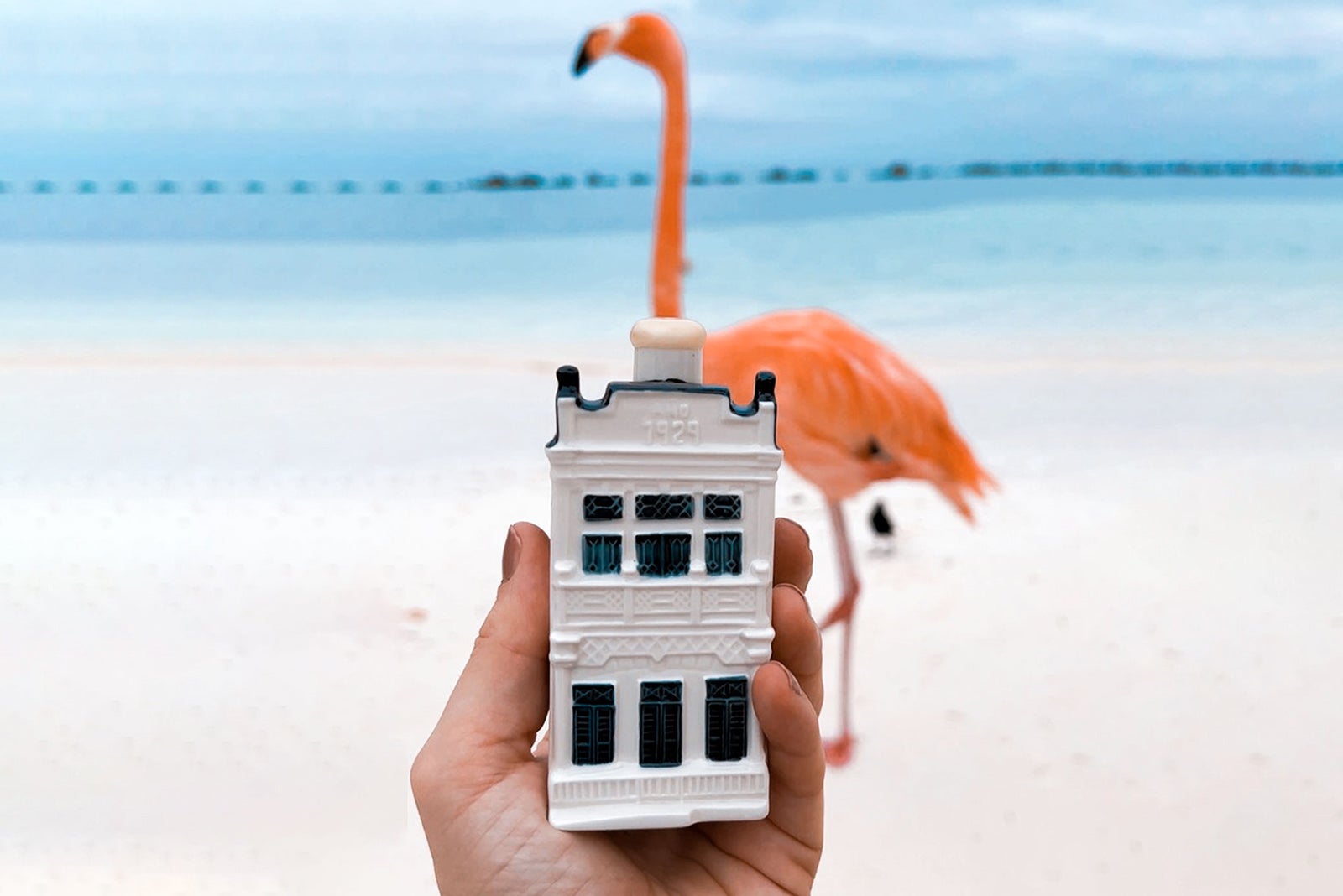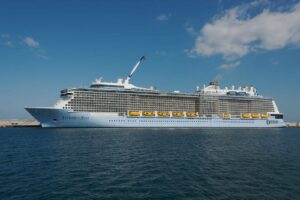KLM Royal Dutch Airlines throws a party each year on its birthday, Oct. 7, to mark the anniversary of the airline’s founding in 1919.
The highlight of the evening is the unveiling of the airline’s newest gin-filled miniature Delftware house portraying a different historically or architecturally significant building in the Netherlands or abroad.
This year’s house
The airline has been gifting Delft Blue miniature houses to passengers flying in KLM’s long-haul business-class cabins since the 1950s. Thanks to a catch-up program, the number of houses in the collection now matches the airline’s age. (Some limited-edition and “special occasion” houses have also been issued.)
At this year’s birthday party, the airline unveiled house No. 103: a miniature Delftware replica of the Ecury House in Aruba. As part of the festivities held in Aruba, KLM president and CEO Marjan Rintel presented the first miniature to Agustin Vrolijk — acting governor of Aruba — and to the Ecury family.
“KLM has had many ups and downs over the past century,” Rintel said. “But we’ve always marked our anniversary on Oct. 7 because we want to keep celebrating that KLM is a wonderful company that connects the Netherlands with the world.”
Want more airline-specific news? Sign up for TPG’s free biweekly Aviation newsletter.

This is only the second time a KLM Delftware miniature has been based on a building outside the Netherlands. (A building in Curacao got that honor on KLM’s 85th birthday).
KLM picked the Ecury home because Aruba will be celebrating its centenary of aviation in 2023, and Nicasio “Dundun” Ecury played a significant role in the development of aviation on the island. His son, Boy Ecury, studied in the Netherlands and was a resistance hero during World War II before he was betrayed and executed in 1944.
The Ecury House, built in 1929, is now part of the National Archaeological Museum of Aruba and sits near the site where the first aircraft to Aruba landed. Besides its historical significance, the Ecury family home has architectural merit, according to Mark Zegeling, the Dutch author of several books about the real houses and landmark buildings featured in KLM’s Delft miniature house series.
“Designed by the Aruban architect Medardo Dada Picus in a typical Caribbean Art Deco style, ‘the green house’ is decorated with gingerbread carvings along the portico and balcony,” Zegeling said. “With its Art Deco-style facade, stained glass windows and ornamental vases on the corners of the roof, Cas Ecury is part of Aruba’s cultural heritage.”
KLM’s connection to Aruba reaches back almost 90 years.
A KLM Fokker-XVIII plane, christened “the Snip,” first touched down in Aruba on Dec. 23, 1934, as part of KLM’s first transatlantic flight. Scheduled service between Aruba and Curacao began on Jan. 19, 1935, and was the first flight operated by KLM’s West-Indian Branch. Scheduled service between Amsterdam and Aruba began almost 50 years ago in 1974. Now, there are daily flights between the two destinations.
Past and future of the miniature houses

The idea to fill the miniature Delftware houses with gin came about in the 1950s, when there was a limit placed on the value of gifts the airline could give its passengers. By putting liquor (Bols Dutch Genever) inside the little houses, they could be considered cocktails that came in souvenir containers, rather than stand-alone gifts.
Today, each KLM World Business Class passenger on an intercontinental flight may choose a Delftware miniature house from a selection offered by the cabin crew. The little houses have become highly sought-after collectibles, and there is a Delft Blue houses app to help serious collectors keep track of which editions they have or still need.
Rintel — who was CEO of NS Dutch Railways before taking over as KLM CEO and president on July 1, 2022 — told TPG that during a past 15-year stint working for KLM, she often had the chance to fly World Business Class and receive Delft miniature houses as a passenger.
“I have a little more than half of the houses in my own personal collection and display them in my living room,” she said.
House 103 was already chosen when Rintel came on board, but now as KLM CEO, she’ll be involved in the choice of house 104.
“These collectors’ items reflect the deep connection our brand and history has to the Netherlands and Dutch culture,” Rintel told TPG. “And we will certainly not make any changes to this great program.”



